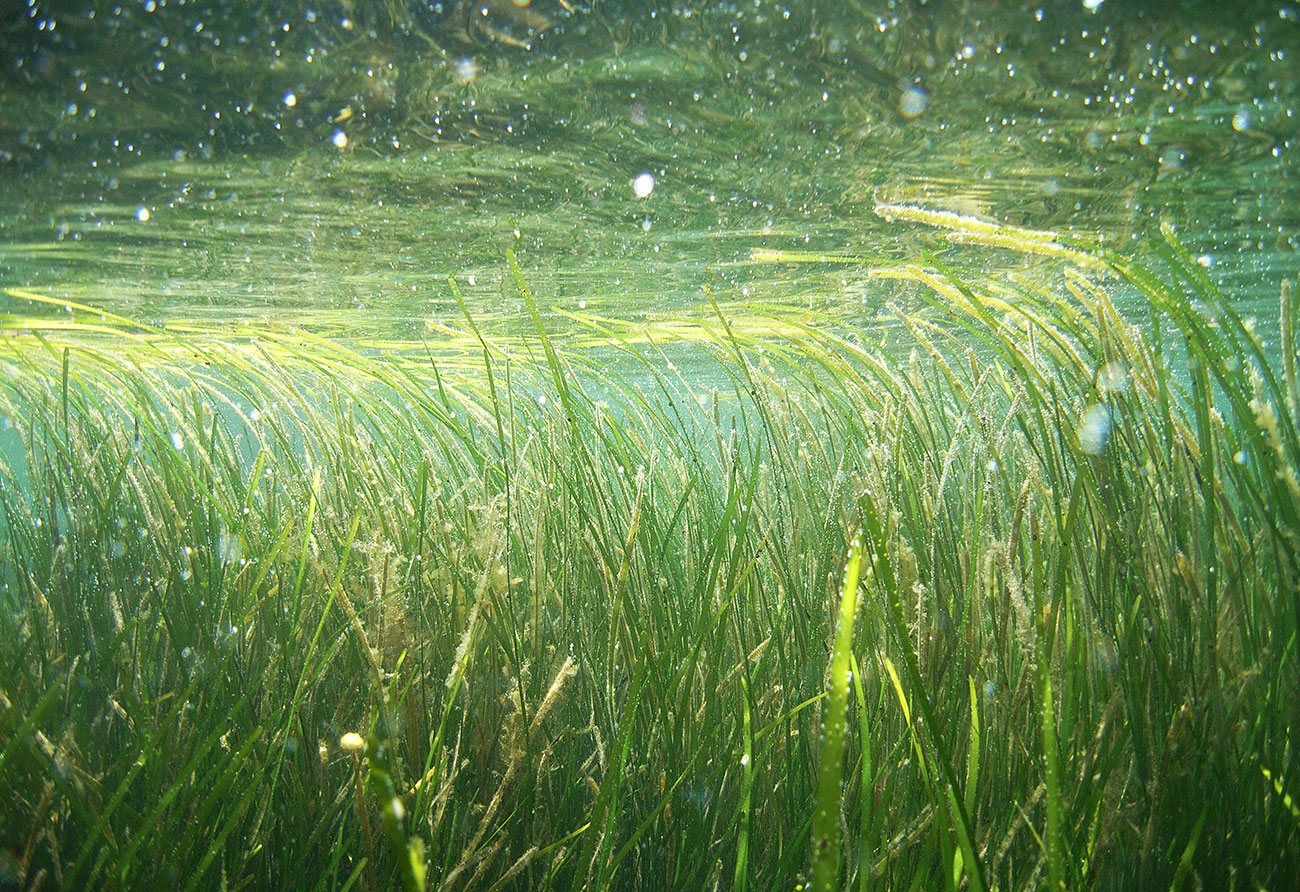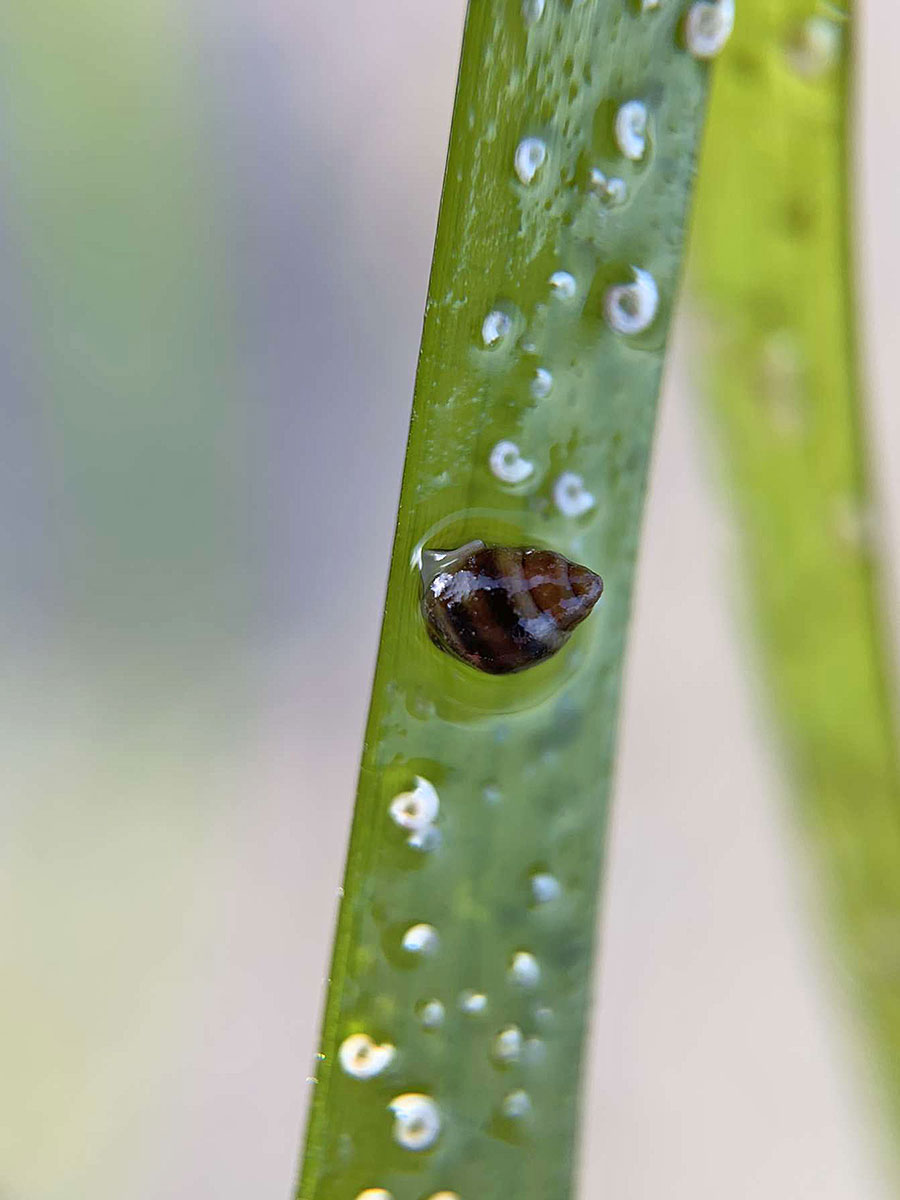The Fishers Island Seagrass Management (FISM) Coalition has developed a plan to protect the threatened but vital resource of eelgrass beds in Long Island Sound. The FISM coalition, a group that represents a variety of stakeholder interests, established a goal of protecting all of Fishers Island’s eelgrass, as it is an important resource in sustaining the quality of life on the island. The Coalition spent two years developing the plan and the Museum has taken a leadership role in developing and implementing the plan.
Eelgrass meadows were once abundant throughout the bays and harbors of Long Island Sound, but today, less than 10% of their historic acreage remains, all of which is found in the easternmost reaches of the Sound. Fishers Island contains a significant portion of this remaining eelgrass: 24% of the eelgrass in all of Long Island Sound and 96% of the eelgrass in New York’s portion of the Sound.
These eelgrass meadows serve as essential spawning, nursery, shelter and foraging areas for a wide variety of wildlife including sea turtles, pinnipeds, shellfish, crustaceans and fish, as well as many commercially and recreationally important species, including bay scallops, American lobster, tautog, striped bass and summer flounder. Together the species form an important ecosystem.
“I am excited that we finally have something to present to the community that has such broad support,” says Elizabeth McCance, President of the Board of Trustees at the Henry L. Ferguson Museum. “I hope it will engage the larger community and inspire people to both learn more about this vital resource and take actions to protect our eelgrass.”
The goal of the plan is to protect this vital resource, and the ecosystem services, such as nurturing fish populations, protecting shorelines and sequestering carbon, that it provides to the island’s community. The plan will help raise community awareness of best practices and actions that can be taken to minimize the threats to eelgrass.
“The plan relies solely on the community to take responsible action and therefore will be implemented through a number of educational and outreach initiatives,” says McCance.
The Museum has been helping to raise funds to support the work of the FISM coalition, including securing donations from private foundations, as well as state and federal grants including one from the New York Conservation Partnership.
Hannah Vagts, the Coalition’s newly hired FISM Coordinator will develop the awareness building initiatives. Vagts, who is a biochemist, has a wealth of research experience in marine biodiversity and population assessments. She most recently served as a research assistant at Auburn University where she conducted a reef fish movement and population study. Vagts graduated Magna Cum Laude in 2017 from Redlands University where she majored in biochemistry and molecular biology. She received a master’s degree in Marine Science from the University of St. Andrews in 2018.
What You Can Do To Help Protect Seagrass:
- Minimize scouring from moorings and anchors: Anchors and mooring chains are capable of creating physical damage to eelgrass meadows, where prop scars create long lines of uprooted eelgrass. Boaters can convert traditional moorings to conservation moorings. Future moorings should be located outside of eelgrass meadows. Voluntary no-anchoring zones can be created.
- Limit fertilizer Run-off: Nitrogen pollution, from sewage, fertilizers and the atmosphere, is a major cause of eelgrass decline across southern New England and New York. Homeowners can plant vegetative buffers between lawns and shorelines and replace lawns with native plants.
- Limit waste-water run-off: Homeowners should test and maintain septic systems and investigate alternative septic systems.
- Minimize shading from docks: Docks should not be placed over seagrasses.
- Construction near seagrass areas: Best practices should be followed during all coastal construction and dredging projects. Projects should not take place during the growing season.
Barley Field Cove, Fishers Island, NY. Photo courtesy of seagrassli.org
Fishers Island Seagrass Management Plan
Companion to the Fishers Island Seagrass Management Plan
This document contains a compilation of the literature that led to the recommended actions in the plan.
Eelgrass can form large, underwater meadows. Photograph by Emily Bodell
Did You Know?
- Eelgrass meadows are a recognized habitat type much like a coral reef or a tropical rain forest.
- Seagrasses protect coast lines by dampening energy and trapping sediments. These actions stabilize shorelines and prevent coastal erosion. In this capacity, seagrass meadows serve as natural buffers, reducing the need for hardened shorelines.
- Seagrass meadows mitigate climate change by both sequestering and storing carbon. In fact, seagrasses absorb twice as much carbon per area as tropical forests on land.
- Seagrasses improve water quality by producing oxygen and extracting excess nitrogen. Seagrasses filter out pathogens, ridding the water of disease agents, which reduces food contamination.
Snails move along, eating the algae that grows on the eelgrass blades. Photograph by Jessica Labonte




